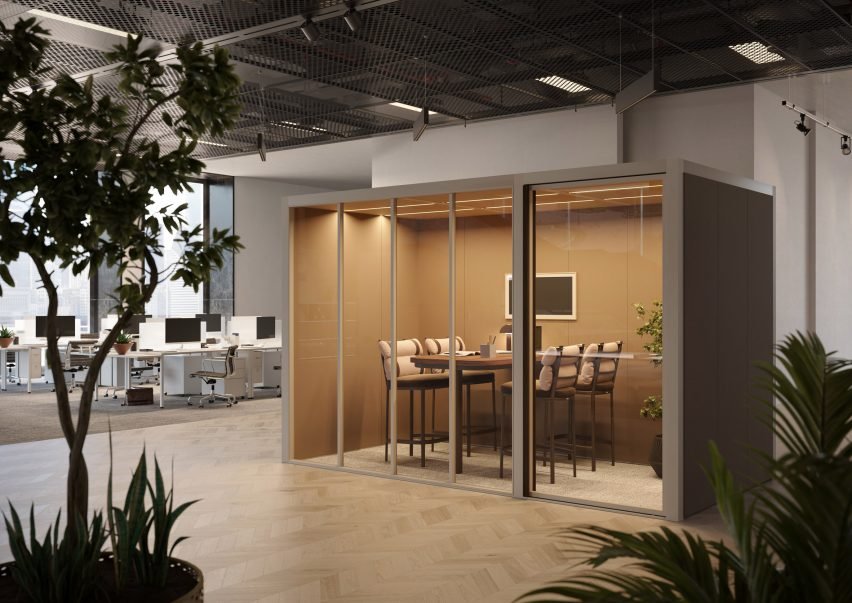 In the world of workplace design, open office layouts have dominated the scene for the past few decades. Initially celebrated for their ability to foster collaboration and communication, these environments are characterized by their absence of walls and physical barriers.
In the world of workplace design, open office layouts have dominated the scene for the past few decades. Initially celebrated for their ability to foster collaboration and communication, these environments are characterized by their absence of walls and physical barriers.
However, as the adoption of open offices became more widespread, several challenges emerged, including noise distraction, lack of privacy, and in some cases, decreased productivity. Recognizing these issues, designers and companies have been reimagining the open office concept to better serve the evolving needs of modern businesses and their employees. One notable trend in this evolution is the rise of modular meeting rooms.
Modular meeting rooms, also known as huddle rooms or pods, are flexible spaces designed to provide an enclosed area within an open office environment. They are designed to be easily reconfigured, moved, or resized based on the changing needs of the organization. This flexible, modular approach to workspace design aims to reconcile the benefits of open-plan offices with the necessity for privacy and quiet spaces.
A significant advantage of modular meeting rooms is their adaptability. With the changing nature of work, especially the shift towards more collaborative and project-based activities, the need for different types of workspaces has increased. Modular meeting rooms can be adapted for different uses, from formal meetings and presentations to brainstorming sessions, private calls, or even as quiet spaces for focused work.
Another benefit is the efficient use of space. Traditional meeting rooms are often underutilized, sitting empty for large portions of the day. With their flexibility, modular meeting rooms can help optimize the use of space in an office, ensuring that valuable square footage isn’t wasted. They also allow companies to easily scale up or down their meeting spaces as their needs change, without the need for extensive renovations.
Modular meeting rooms also respond to the need for privacy in open offices. With their ability to provide soundproofed, enclosed spaces, they address one of the major criticisms of open-plan offices. Employees can retreat into these rooms for private conversations, confidential meetings, or simply to escape the surrounding noise and activity. This capacity to switch between collaborative and private work modes can enhance employee satisfaction and productivity.
Moreover, modular meeting rooms also contribute to the aesthetic appeal of the workspace. These modern, innovative designs can enhance the overall look of the office and can be customized to align with the company’s brand and culture.
However, integrating modular meeting rooms into open office designs requires careful planning. Factors such as positioning to avoid blocking natural light, ensuring easy accessibility, and considering technical requirements for power and data connections are crucial for their successful implementation.
The rise of modular meeting rooms is a reflection of the need for greater flexibility and adaptability in the workplace. As businesses continue to evolve and adapt to changing work dynamics, so too will the design of their office spaces.
Modular meeting rooms offer a promising solution to the challenges posed by open office designs, encapsulating the future of workspace – one that is dynamic, flexible, and focused on both collaboration and privacy. They mark a significant milestone in the ongoing evolution of office design, demonstrating how spaces can be designed to better align with the multifaceted nature of modern work.